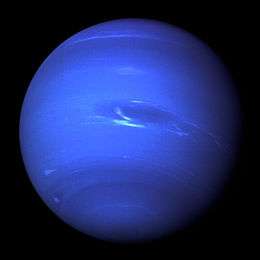K2-22b
| Exoplanet | List of exoplanets
| |||||
|---|---|---|---|---|---|---|
| Parent star | ||||||
| Star | K2-22 | |||||
| Right ascension | (α) | 11h17m55.88s [1] | ||||
| Declination | (δ) | +02d37m08.7s[1] | ||||
| Distance | 733.852±163 ly (225±50[1] pc) | |||||
| Mass | (m) | <0.60±0.07[1] M☉ | ||||
| Radius | (r) | <0.57±0.06[1] R☉ | ||||
| Temperature | (T) | 3830±100[1] K | ||||
| Metallicity | [Fe/H] | 0.030±0.080[1] | ||||
| Physical characteristics | ||||||
| Mass | (m) | <445[1] M⊕ | ||||
| Radius | (r) | <2.5±0.4[1] R⊕ | ||||
| Density | (ρ) | <157.1 g/cm3[1] g cm−3 | ||||
| Temperature | (T) | 2,100 K (1,830 °C; 3,320 °F) | ||||
| Orbital elements | ||||||
| Semi-major axis | (a) | 0.0088[1] AU | ||||
| Eccentricity | (e) | null[1] | ||||
| Orbital period | (P) | 0.381078[1] d | ||||
| Inclination | (i) | null[1]° | ||||
| Discovery information | ||||||
| Discovery date | 2015 | |||||
| Discoverer(s) | ||||||
| Discovery method | Transit | |||||
| Discovery site | Kepler Space Observatory | |||||
| Discovery status | Confirmed | |||||
K2-22b (also known as EPIC 201637175 b) is an exoplanet 734 ly from Earth, rapidly orbiting the red dwarf K2-22 with an orbital period of 9.145872 hours.[1] It has an upper mass of 445 Me and a radius of 2.5 Re The planet was not detected in the K2 photometry. K2 photometry reveals the presence of an anomalous light curve consistent with evaporation of dust from the planet. This dust forms a tail both ahead and behind the planet, similar to some comets in the Solar System.[2] The evaporation of this dust requires a low surface gravity from the host planet, implying it is a low mass, "Mars, Mercury, or even lunar sized bodies with surface gravities of 1/6 to 1/3 that of Earth are to be preferred."[2]
The exoplanet is a hot Jupiter, and it orbits its host star very closely. Its semi-major axis is among the smallest for hot Jupiters.[3]
See also
 Astronomy portal
Astronomy portal
References
- 1 2 3 4 5 6 7 8 9 10 11 12 13 14 15 "K2-22 b CONFIRMED PLANET OVERVIEW PAGE". NASA Exoplanet Archive. Retrieved 2015-10-14.
- 1 2 Sanchis-Ojeda, R.; Rappaport, S.; Pallé, E.; Delrez, L.; DeVore, J.; Gandolfi, D.; Fukui, A.; Ribas, I.; Stassun, K. G. (2015-10-14). "The K2-ESPRINT Project. I. Discovery of the Disintegrating Rocky Planet K2-22b with a Cometary Head and Leading Tail". The Astrophysical Journal. 812 (2): 112. arXiv:1504.04379
 . Bibcode:2015ApJ...812..112S. doi:10.1088/0004-637X/812/2/112. ISSN 1538-4357.
. Bibcode:2015ApJ...812..112S. doi:10.1088/0004-637X/812/2/112. ISSN 1538-4357. - ↑ Ciceri, Simona (2015). "Characterizing Transiting Extrasolar Planets" (PDF). Max Planck Institute for Astronomy. p. 28. Retrieved 3 April 2016.
| Preceded by PSR J1719-1438 b |
Most dense 2015 —present |
Succeeded by none |




